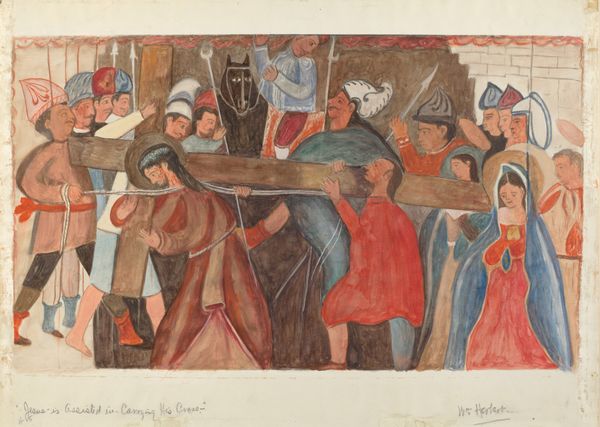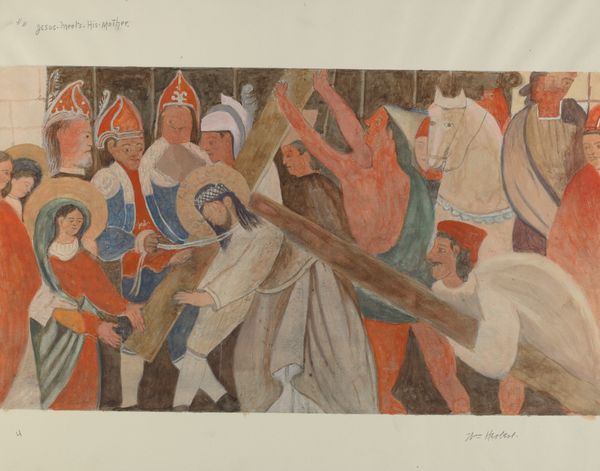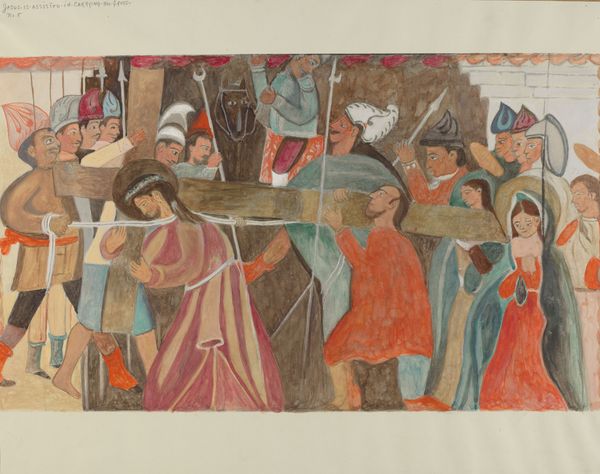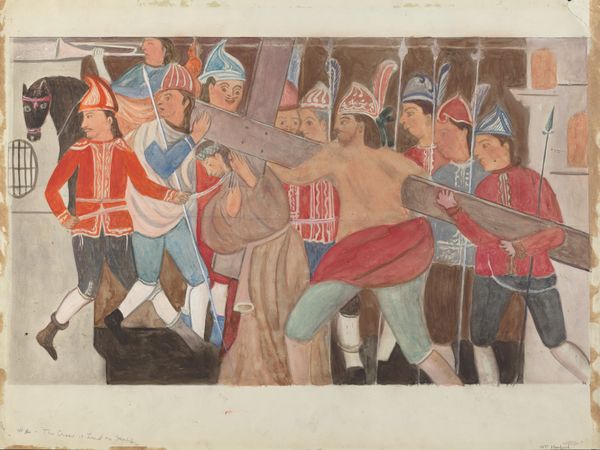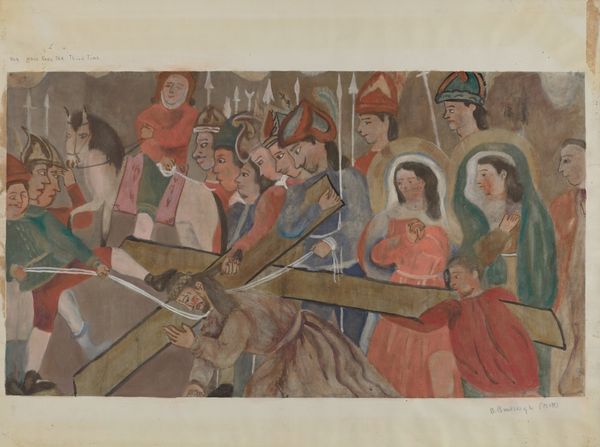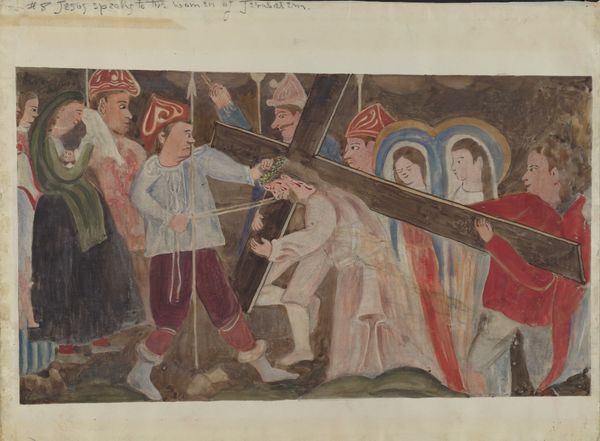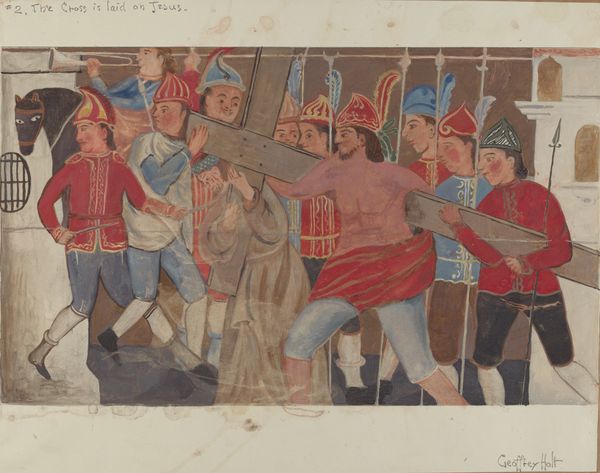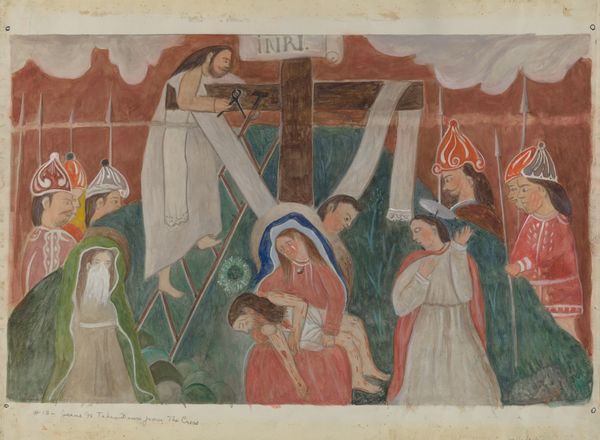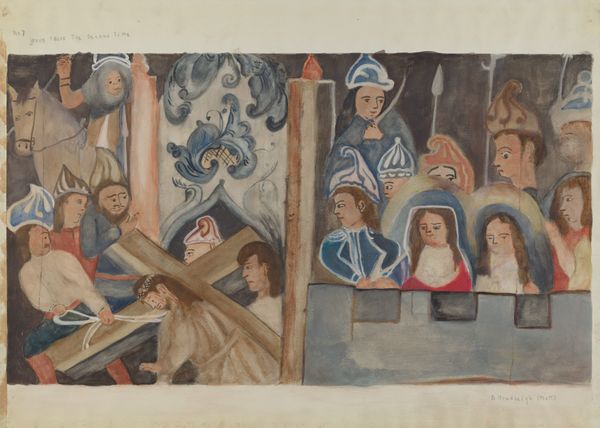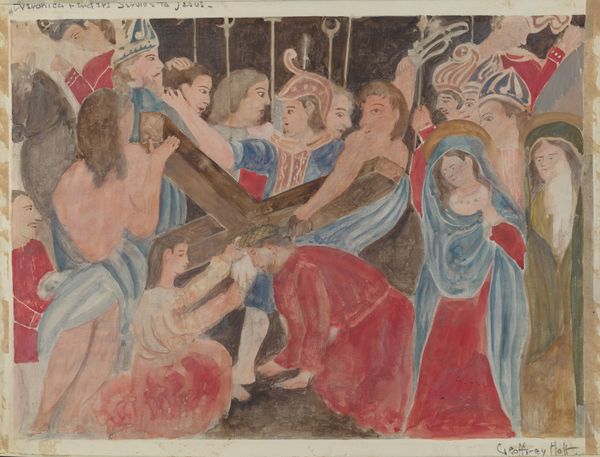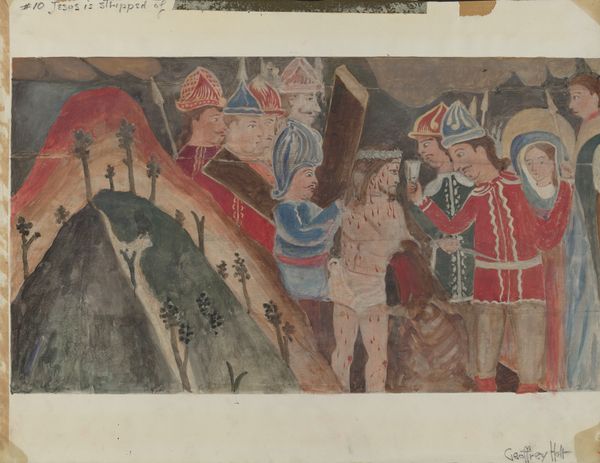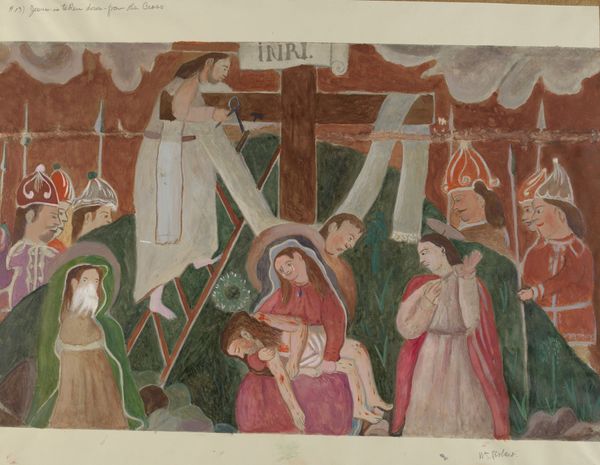
drawing, tempera, painting, watercolor
#
drawing
#
water colours
#
narrative-art
#
tempera
#
painting
#
figuration
#
watercolor
#
coloured pencil
#
underpainting
#
watercolour illustration
#
history-painting
Dimensions: overall: 38.1 x 49.8 cm (15 x 19 5/8 in.) Original IAD Object: Approximately 30 x 50 in.
Copyright: National Gallery of Art: CC0 1.0
Curator: This tempera and watercolor drawing is William Herbert’s, “Station of the Cross No. 4: Jesus Meets His Mother,” from around 1936. It seems to capture the raw human emotion amid this moment. Editor: There's a weight to it, a somberness that the limited color palette really accentuates. What’s fascinating is the clear display of figuration throughout, giving it an almost comic strip quality despite the historical setting. Curator: Herbert uses the biblical narrative as a springboard to reflect on themes of injustice, grief, and power dynamics, issues sadly still so resonant today. It's interesting to me how Herbert positions Mary within this scene of suffering, the one place where female presence seems allowed. We often frame such scenes through a very masculine lens. Editor: Exactly! And looking at the medium itself - watercolor - feels important here. It’s immediate, almost like reportage. It creates a social immediacy and accessibility—not quite high art. Also, I notice this rough execution. It almost evokes murals—are we meant to see the human labor and skill, however limited, here? Curator: Precisely! These choices serve to democratize a very well-known religious scene. Editor: The cross looks so heavy! And yet here the act of image-making involves so many light strokes and a watery paint. Curator: Let's not ignore how the artist creates tension between faith and social consciousness. The artist doesn't portray it as a miraculous, almost ethereal vision, instead emphasizing the grounded, lived experience within this narrative. It acknowledges both its religious foundation and a radical reading of power. Editor: This pushes me to see beyond just the iconic story; it invites me to consider the material processes involved in the artmaking itself. The layering of watercolours, for example—you see these subtle details, how this texture makes this powerful commentary. Curator: Absolutely. By acknowledging these nuances, we can better grapple with themes of resistance, mourning, and the collective experience of trauma present throughout Herbert's work. Editor: Ultimately, focusing on technique opens an entryway into broader conversations. This image underscores the idea that the message resides not just in representation, but also within the materials themselves.
Comments
No comments
Be the first to comment and join the conversation on the ultimate creative platform.
